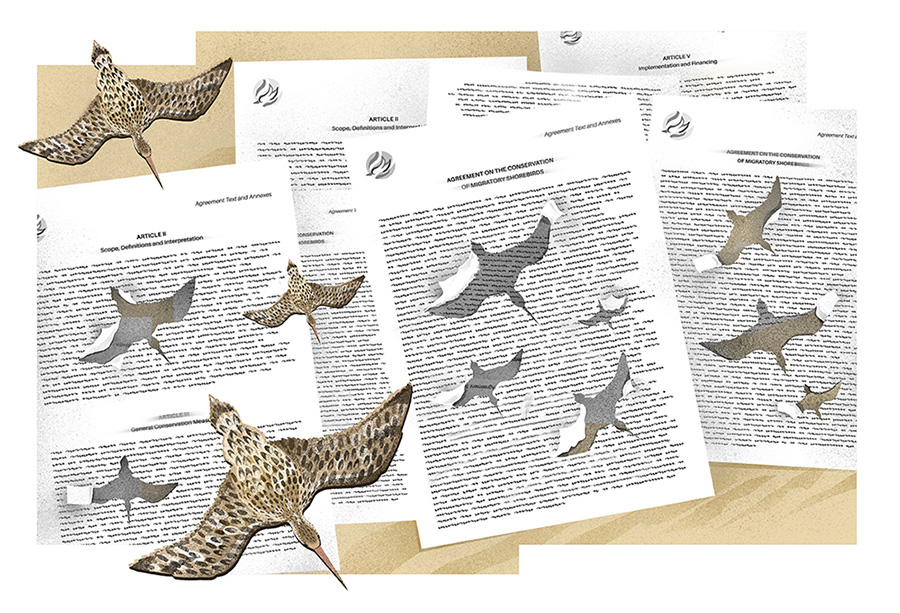Herbivorous fish are the gardeners of reefscapes. They graze on algae that live on reefs, making sure it does not overgrow and ensuring there’s plenty of space available for new coral to settle and grow. How their activity is distributed across the reefscapes can therefore determine how these reefs function. In a new study published in Scientific Reports, we investigated how exposure to wave action affected herbivore distribution and function.
The study was conducted in the Lakshadweep archipelago because it provided ideal natural conditions to study wave action on reefs—some parts of the islands are exposed to stronger waves than others. Due to the southwest monsoon winds, reefs on the western sides of the islands were more exposed to waves, while those on the eastern sides were relatively sheltered. This allowed us to compare herbivore distribution and function on eastern and western sides of the island.

The study consisted of a combination of field observations, which included swimming transects and video recording, exclosure experiments—mesh cages were constructed on reef substrate to keep out herbivorous fish in order to study how algae grows in the absence of these fish—and a pinch of luck, when we chanced upon a rare recruitment event where thousands of tiny surgeonfish larvae or recruits entered the reefs to settle, giving us an opportunity to understand their settlement choices at an early stage in life.
We found that reefs exposed to strong waves (on the western sides of the islands) had fewer herbivorous fish, fewer number of fish species, and the ones that did live there seemed to be eating less algae than those that lived on the eastern sheltered reefs. In other words, the western coral reefs were less controlled by herbivores than the eastern coral reefs.
We also found that the shapes and swimming abilities of fish played an important role in determining how they performed on wave-battered reefs. Laterally compressed fish (having a flattened body shape) were unable to do well here, likely because they found it harder to manoeuvre through rough waters. Fusiform o torpedo-shaped fish on the other hand, did better on these wave-battered reefs.

For the two observed species of surgeonfish, a larger number of recruits settled on the sheltered reef than on the wave-battered reef, thereby suggesting a preference for stable and complex structures of reefs in calmer waters. And this tells us that the patterns we see in the distribution and abundance of adult surgeonfish start early on in life—right from their settlement choices as juveniles. If the wave-battered reefs lose more coral structure in the years to come, we could expect even lower recruitment of juveniles to these reefs.
Herbivorous fish are the gardeners of the reef. How their activity is distributed across the reefscape can decide how these reefs function. Our study shows that their distribution is distorted, limited by wave action and by the ability of differently-shaped fish to access choppy waters. In turn, the herbivores affect how much algae can grow and are, therefore, critical to the survival of coral recruits. When coral are able to successfully settle, healthy reefs can bloom.

If we are to imagine a future where reefs are healthy and bustling with life again, it is time we take a deeper look into the ways in which fish behave and drive coral reef recovery.
Original paper:
Karkarey, R., P. Rathod, R. Arthur, S. Yadav, A. Theo and T. Alcoverro. 2020. Wave exposure reduces herbivory in post-disturbed reefs by filtering species composition, abundance and behaviour of key fish herbivores. Scientific Reports 10: 9854. doi: 10.1038/s41598-020-66475-y.
Further reading
Fulton, C. J., D.R. Bellwood and P.C. Wainwright. 2005.. Wave energy and swimming performance shape coral reef fish assemblages.Proceedings of the Royal Society B: Biological Sciences 272, 827–832.
Bejarano, S., J.B. Jouffray, I. Chollett, R. Allen, G. Roff, A. Marshell, R. Steneck et al. 2017. The shape of success in a turbulent world: wave exposure filtering of coral reef herbivory. Functional Ecology, 31(6), 1312-1324.
Arthur, R., T.J. Done, H. Marsh and V. Harriott. 2006. Local processes strongly influence post-bleaching benthic recovery in the Lakshadweep Islands. Coral Reefs 25, 427–440.
Yadav, S., P. Rathod, T. Alcoverro and R. Arthur. 2015. ‘Choice’ and destiny: the substrate composition and mechanical stability of settlement structures can mediate coral recruit fate in post-bleached reefs. Coral Reefs 35, 211–222.






